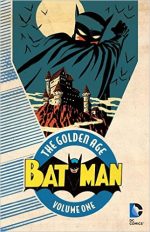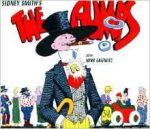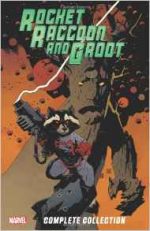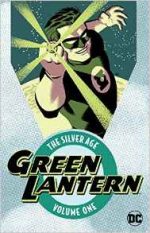
By Jeff Nicholson (Dover Comics & Graphic Novels)
ISBN: 978-0-486-80286-2
Win’s Christmas Gift Recommendation: Epic Self-Exploration and Terrifyingly Revelatory Erudition… 9/10
To cheekily hijack a common aphorism, Comics Will Eat Itself whenever an opportunity occurs. The way creators, readers, devotees and collectors respond to the medium is infinitely fascinating to us and has formed the basis of many stellar strips and novels: not just in the arena of Graphic Autobiography but also in other picture/prose genres…
For a brief while and every so often, Jeff Nicholson was a comicbook creator. His most well known works are probably 1980s self-published satirical parody series Ultra Klutz and the award-winning Colonia. After this last concluded in 2006, Nicholson quit comics.
Somewhere in between those two radically different creations, he produced one of the scariest yet most compelling ruminations on the experiences and compulsions of making picture stories and working as an artist-for-hire ever put to paper.
From 1990 to 1997 Through the Habitrails appeared episodically in Steve Bissette’s groundbreaking horror anthology Taboo and there has never been a better examination of an (extra)ordinary guy being creative on command, turning visual tricks and drafting wonders whilst under corporate pressure and an obsessive personal need to make art…
Moreover, he crafted the experience as a mesmerising blend of autobiography and toxic, paranoid terror-tale; rendered even more isolating and crushing by adopting a fiercely bleak science fictional tone and deeply symbolic method of illustration…
After Matt Fraction qualifies the vicissitudes of the modern work experience in his ‘Foreword’ Bissette’s Introduction offers history, context and untrammelled appreciation in ‘Never on Monday: Through the 21st Century Habitrails’ and ends by explaining how Nicholson was persuaded to return to his sinister seminal work to update – if not placate – his growing legion of (perhaps unwanted) admirers…
Lettered throughout by Chad Woody, the cartoon catharsis begins with ‘Increasing the Gerbils’ as a literally faceless wage slave – drawing to order in a corporate studio which is only a small division of a massive mercantile monolith – describes his increasingly intolerable life. The office is crammed and ponderously industrious and incorporates tubes and tunnels in the walls where creepy rodents run maze-like from room to room: a Byzantine and barely explicable connection with the serried, unknowable Powers That Be…
None too slowly, the line between employee and subject beast of burden begins to blur…
Another unwholesome aspect of the job is how Management wanders the halls, arbitrarily tapping the workers and consuming their vital spirit, as grimly revealed in ‘It’s Not Your Juice’…
The steps taken to remain an individual are touched on in ‘No End’ and pitifully laid out in ‘Jar Head’ as the worker describes the use and variety of intoxicants used by the not-quite-captive Creatives to maintain output before his attention shifts to describing the fate of ‘The Doomed One’: the worker who did not bend to an oppressive, self-selected yoke but instead tried to rebel. Her fate was incomprehensible and appalling but not unexpected…
Such pressure to perform can not be endured forever and our pictorial peon eventually found release in walking and wandering in his downtime. The shocking repercussions of ‘Escape #1: “El Muerte‒ were expansive but still tantalised him with a promise of better… once he returned to work…
Not all needs can be met by the benefits of being a corporate drudge. Nevertheless, it’s the most likely place to meet potential mates. When ‘Futile Love’ happens and goes horribly wrong, naturally it provokes another deviation from protocol and ‘Escape #2: “The Dry Creek Bed‒ quietly carries him far away but ultimately only back to where he started from…
The unshakable drive to resist only brings uncomfortable attention from the managers who simply demand ‘Be Creative’, but after another pointless close call the worker heads home and in a barren wasteland discovers a possible answer to all his problems: a weapon he secretes as a tiny, prospective notion of rebellion he chooses to call ‘Animal Control’…
With a glint of hope and a possible ally in reserve, the thought that one of his fellows might be untrustworthy begins to dominate, but the truth about and fate of ‘The Infiltrator’ leaves nobody wiser or happier…
The hunger for space and wish for clarity push the artist into ever-greater unsanctioned ventures but ‘Escape #3: “Concow‒ again proves that no matter how far you go, what awaits is never going to be a welcome surprise…
A near-escapee who was dragged back into the fold attempts to rationalise his twice-lost liberty with the suffocating security of wage slavery and constant draining by creating an exposé. Sadly his assumptions about the value and efficacy of his ‘Dark Spiral’ can only end one way and the artist must resort to collusion with his dark side as delineated by ever-encroaching sometime ally ‘The Gerbil King’…
With work and notional reality fully at war, a catastrophic climax approaches as ‘Jimmy’ enters his life and changes everything forever…
Was that all a little vague? I certainly hope so because this is something you really need to work your way through on your own. The tone fits though: don’t read this unless and until you’re psyched up and suitably apprehensive…
The material has been collected a number of times since it first appeared but this superb Dover Edition offers what we smart-arse cognoscenti never expected: a continuation of the tale and dialogue with the creator from a place and position far less dark than that animal-infested region of the 1990s.
Preceding an ‘Afterword by Jeff Nicholson’ and the now-mandatory ‘About the Author’ feature, the comics self-diagnosis concludes with ‘Epilogue 1: Beyond the Habitrails’ and ‘Epilogue 2: Ghost Town Studio’: bringing us up to date in an equally abstracted but far more upbeat manner and supposing that at the end of some tunnels – or tubes – there can be light, not darkness…
Barbed with allegory, using metaphor like a scalpel and employing all the darkly surreal glamour and oppressive verve of Terry Gilliam’s Brazil or Spike Jonze’s Being John Malkovich, this potent dose of exploratory surgery for the soul simultaneously dissects why comics are made and why some of us must make them whilst telling one of the scariest tales of modern times.
Although certainly an acquired taste, Through the Habitrails is a must-see, never-forget graphic novel for anybody with a vested of intellectual interest in the Ninth Art.
© 1994, 1996, 2016 by Jeff Nicholson. Foreword © 2016 Matt Fraction. Introduction © 1996 Stephen Russell Bissette. All rights reserved.









